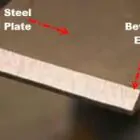You will always put a cylinder, a base, and a cover together in order to create a boiler. This endeavor is more difficult than it appears because of our dedication to effectiveness and reliable high quality. This blog is your key to know about how high performance automated welding can increase the productivity.
Speed and superior quality are prerequisites for automated welding.
When making a boiler, both manual and mechanised work processes you can use. High speed and repeatable output are two characteristics of automated procedures; the latter is particularly crucial while welding. Regardless of the user, automated welding maintains consistently high standards of quality on the manufacturing line.
Initially you roll A sheet into a cylinder while making a boiler. An automated procedure is in system to place the cylinder into a longitudinal welding station and weld it. During the last stage of manufacture you place the boiler’s cylinder, base, and lid, together on a spherical welding station during the last stage of manufacture. You use the CMT TWIN welding procedure in this situation; it involves joining the components with two automated circumferential welds.
Using CMT TWIN as a remedy.
The CMT TWIN tandem welding technique combines two arcs which consists of two wire electrodes that are each individually in control. Before using the CMT (Cold Metal Transfer) process to make the weld pool bigger, the MAG pulse process (a metal active gas method in which the arc is there in pulses) is in use to make sure that the arc has gone deep into the metal. In the very steady CMT welding process, the wire is out just before the droplets fall off. This prevents uncontrolled short circuits and the formation of spatter.
Boilers are subject to extremely dynamic load forces when in use, and CMT TWIN supports both the speed and quality requirements for production. While low-spatter CMT offers a beautiful weld-seam appearance and little rework, deep penetration adds to the arc stability. This helps to achieve a faster deposition rate and hence higher welding rates.
Think about cost-effectiveness.
The production process is focused on cost efficiency and the final product. In addition to guaranteeing flawless quality of the manufactured boiler, the production system must also ensure profitability through quick cycle times and high output. Only by minimising downtimes will a high level of system efficiency be possible. The competitive advantage that the system user can leverage is ultimately under the influence by all of these factors.
Not all job processes, nevertheless, can be automated to reduce costs. Therefore, machines must be developed to meet the needs of each individual user as well, including ergonomics, usability, and guaranteed safety. It’s also crucial to guarantee that users can follow the cycle times set by the automated operations.
A cycle time of 45 seconds is possible with the use of CMT TWIN, perfectly timed manual and automated processes, and these factors. Due to the ergonomically framed sections this cycle time is in place.





